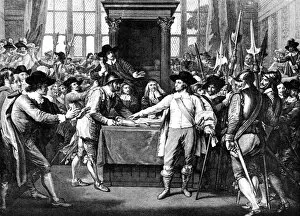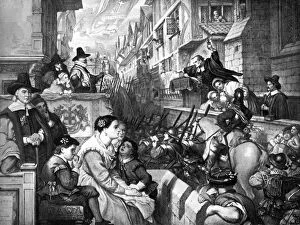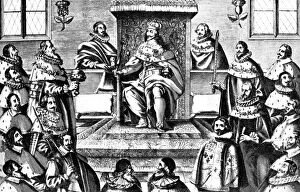Philip Smith Collection (#3)
Philip Smith, a man of history and intrigue, finds himself immersed in the grandeur of the Palace of Westminster
For sale as Licensed Images
Choose your image, Select your licence and Download the media
Philip Smith, a man of history and intrigue, finds himself immersed in the grandeur of the Palace of Westminster. As he gazes upon the clock face of Big Ben, his mind drifts back to a time when this iconic landmark was just beginning to etch its mark on London's skyline, and is c1905, and Philip imagines Henry John Temple, 3rd Viscount Palmerston, standing tall as a British statesman within these very walls. In another corner of his imagination, Philip envisions the Articles of Union being presented by Commissioners to Queen Anne in 1706. The weighty significance of this momentous event resonates with him as he contemplates the unity it brought forth. The coronation procession of George II captures Philip's attention next. He can almost hear the cheers and see the vibrant colors adorning the streets during this majestic occasion in 1727 (c1905). The Terrace beckons him further into history as he envisions an elegant afternoon tea taking place amidst conversations that shape nations. Parliament Offering the Crown to William and Mary transports Philip back even further to 1689 (late 18th century), where pivotal decisions altered England's course forever. His mind then travels through time again to witness Parliament in Session during James I's reign in early 17th century (c1902-1905). The debates echo through his thoughts as he marvels at how democracy has evolved over centuries. Titus Oates' infamous pillory punishment comes alive before Philip's eyes next - Testis Ovat. This dark chapter from the 17th century (c1905) serves as a reminder that power can corrupt even those entrusted with upholding justice. Disraeli's first speech echoes through time into Philip's consciousness - an electrifying moment from the 19th century (c1905) that marked a turning point for both Disraeli and British politics.









